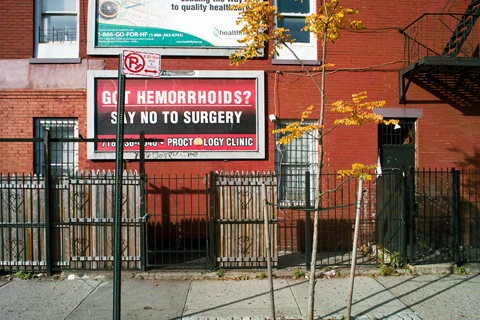
East New York, Brooklyn — © Brian Rose
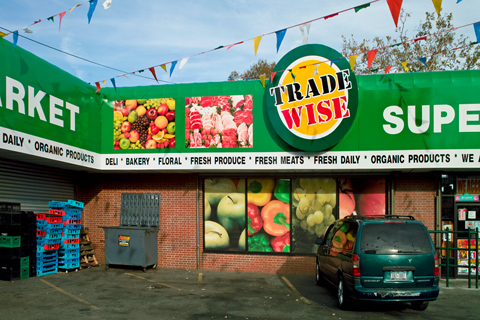
East New York, Brooklyn — © Brian Rose
Without comment.
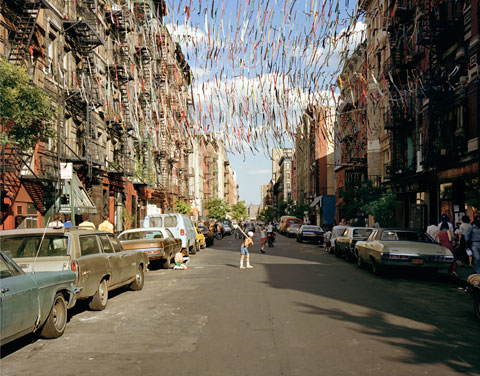
East 4th Street between Second and Third Avenues, 1980 (4×5 film)
© Brian Rose/Ed Fausty
When I first arrived in New York in the summer of 1977–the day of the blackout–I got off the train early, picked up a copy of the Village Voice, perused the classifieds for available apartments, and by noon, had scored a sublet in a rundown tenement on East 4th Street between Second and Third Avenues.
I lived there for about 15 years before moving to Stanton Street, five blocks south, and before my back and forth life between Amsterdam and New York. Working out of that tiny apartment on 4th Street with bathtub in the kitchen and toilet in the hall, I did photographs of the Lower East Side, New York City parks, began my long-term documentation of the Iron Curtain and Berlin, and wrote many of my best songs. Suzanne Vega crashed on my couch a number of times, and one day came by to audition her new song “The Queen of the Soldier” for me. The first Fast Folk magazine inserts were pasted up in my apartment and typed out on a borrowed IBM Selectric.
I met my wife, Renée Schoonbeek, on the block as well. She and her friend Josja van der Veer came from the Netherlands as students to do research on New York housing, and they interned with the Cooper Square Committee, a housing advocacy group that I served on the steering committe of, and briefly chaired. We met in front of Cooper Square’s office just to the left of the photograph above. Together we helped establish the Cooper Square MHA, which continues to maintain affordable housing in more than two dozen buildings in the neighborhood.
Last night, Cooper Square celebrated its 50th anniversary and honored Frances Goldin, co-founder of the organization, literary agent, and a Lower East Side treasure. At times fiery and uncompromising, but at critical moments practical and savvy, she inspired us to fight for low income housing in the face of overwhelming odds. Although most people know her primarily as a firebrand, she led one of the most effective community planning efforts in the city, perhaps in the United States–one that scholars will study for years.
The tenements of 4th Street were renovated one by one, shuffling residents around but displacing no one, and the many theaters and other cultural institutions have formed a cultural district called Fourth Arts Block. The historic streetscape was preserved, and the people–a glorious crazy melting pot of folks–remain here to stay. This week the Village Voice named it the Best City Block, ” a veritable People’s Republic of East 4th Street–right here in Bloomberg Town!”
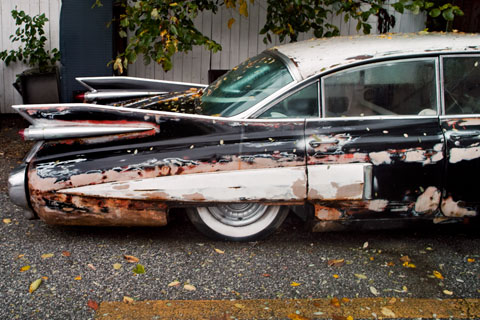
Washington, D.C. — © Brian Rose
Continuing the unintentional vintage automobile theme from below. I’ve been a bit busy lately with photo shoots and a quick trip down to Washington, D.C. Took the picture above while parking my rental car.
Hope to report on the Robert Frank show at the Metropolitan soon. Will be traveling to Berlin in a few weeks to do more photographs for my book proposal, and I’m looking forward to being there on the 20th anniversary of the opening of the Wall.
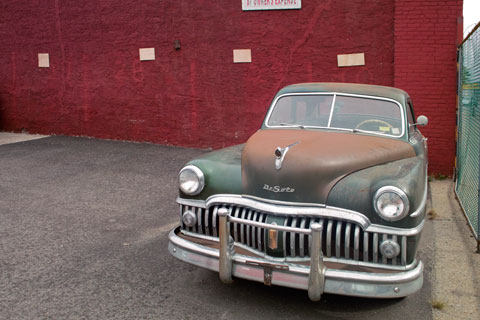
Greenpoint, Brooklyn — © Brian Rose
And Jesus! Wit dat, he pulls it out of his pocket, an’ so help me, but he’s got it – he’s tellin’ duh troot – a big map of duh whole f______ place with all duh different pahts mahked out. You know – Canarsie an’ East Noo Yawk an’ Flatbush, Bensonhoist, Sout’ Brooklyn, duh Heights, Bay Ridge, Greenpernt – duh whole goddam layout, he’s got it right deh on duh map.
“You been to any of dose places?” I says.
“Sure,” he says. “I been to most of ’em. I was down in Red Hook just last night,” he says.
“Jesus! Red Hook!” I says. “Whatcha do down deh?”
“Oh,” he says, “nuttin’ much. I just walked aroun’. I went into a coupla places an’ had a drink,” he says, “but most of the time I just walked aroun’.”
“Just walked aroun’?” I says.
“Sure,” he says, “just lookin’ at t’ings, y’know.”
Thomas Wolfe, Only the Dead Know Brooklyn, 1935

Greenpoint, Brooklyn — © Brian Rose
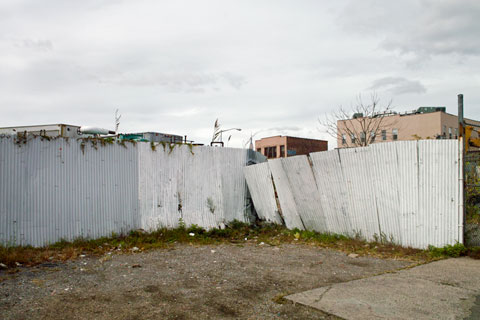
Greenpoint, Brooklyn — © Brian Rose
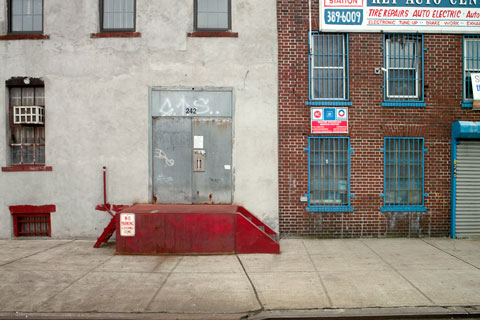
Greenpoint, Brooklyn — © Brian Rose
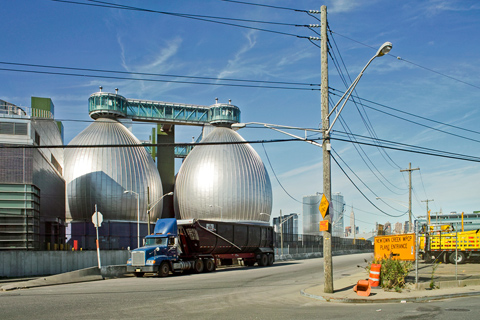
Newtown Creek wastewater treatment plant (the eggs) — Greenpoint, Brooklyn
Polshek Partnership Architects — © Brian Rose
Over the weekend I went to the Newtown Creek sewage plant to tour the famous digester eggs, iconic sludge stomachs that tower over Greenpoint and can be seen from many vantage points around the city. The tour was part of Open House New York, a yearly event, in which architectural landmarks, not usually accessible, are open to the public.
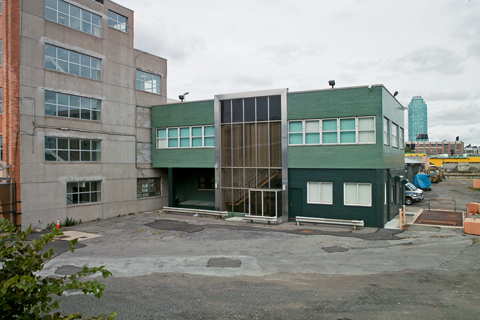
Adjacent to Newtown Creek wastewater treatment plant — © Brian Rose
The eggs dominate a post-apocalyptic industrial landscape, the site of the largest oil spill in US history–still lurking beneath the surface–where ancient crumbling infrastructure meets futuristic high technology.

Newtown Creek sewage plant — © Brian Rose
On Saturday I walked around with my digital camera after going up on the catwalk above the eggs. There’s a “nature walk” that takes one along Newtown Creek, a walled in pathway leads through and around the treatment plant. It’s both wonderful and alien. The light from a leaden sky pressed down.
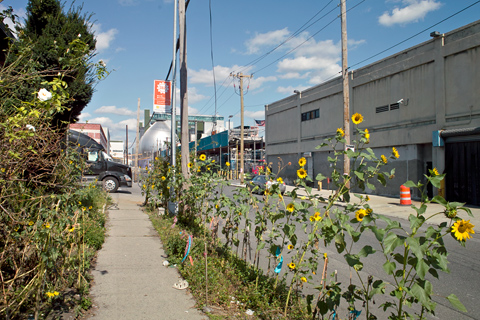
N. Henry Street — © Brian Rose
On Sunday I returned with my view camera–brilliant sunshine this time–and walked over the bridge that crosses Newtown Creek, and went up to an immense cemetery that overlooks the area. As to be expected I was chased out as soon as I set up my tripod. Photography not allowed. Fortunately, however, I was not picked up as a suspected terrorist while framing the eggs through the oil tanks next to the creek or the fluttering sunflowers on N. Henry Street.
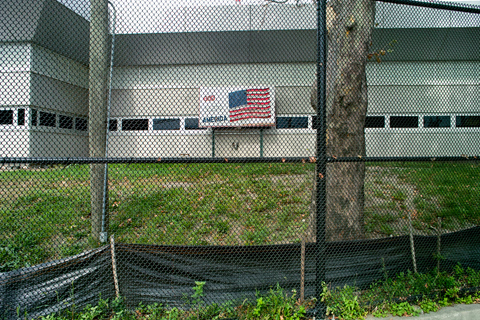
Greenpoint Avenue — © Brian Rose
God Bless America.
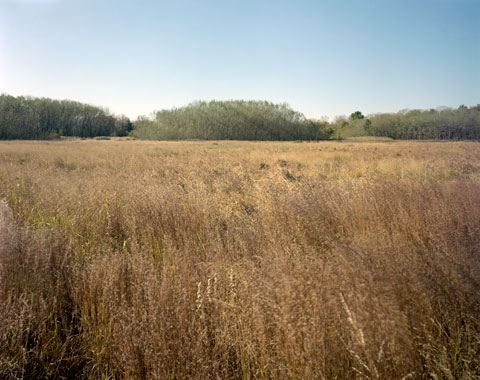
Pelham Bay Park, the Bronx, 1984 (4×5 film) — © Brian Rose
Soon after the Lower East Side project was completed in 1981 I began photographing Central Park, partly on my own, and partly working for the newly formed Central Park Conservancy. This led to further explorations of New York City’s parks focusing primarily on the natural landscape throughout the five boroughs. There were sponsors, exhibitions–but no book–and eventually this work was left mostly unseen in my archive. I’ve always felt that these several park projects contain some of my best pure photography–images made from the raw material of the landscape–and greatly influenced how I approached the Iron Curtain landscape, a project begun in 1985.
I recently discovered that Joel Meyerowitz has published a book–Legacy: The Preservation of Wilderness in New York City Parks–covering much of the same ground as my work from 20 years ago. Seeing it stopped me dead in my tracks, a little stunned. It’s obvious that he was unaware of my earlier work, also done in color with a view camera, so I can hardly complain. But it leaves me, nevertheless, with a feeling of loss.
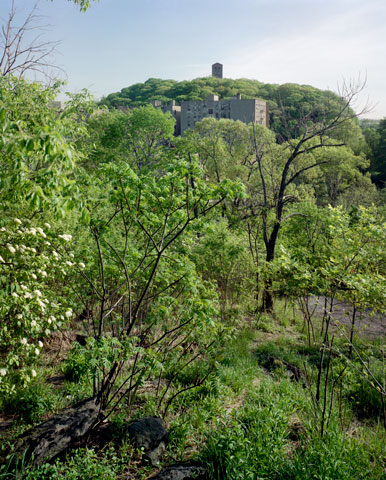
Inwood Park, Manhattan, 1984 (4×5 film) — © Brian Rose
It’s a beautiful book, of course, as one would expect from Meyerowitz, who assiduously explored the far reaches of the city. And an exhibition opens this week at the Museum of the City of New York. So, what to do now with my work, the hundreds of negatives, years of effort?
The answer, as best I can do for the moment, is New York primeval, a web presentation of my natural parks work. It includes almost 70 images along with documentation of how things came about, who funded it, and where it was exhibited. Rather than order the photographs geographically as in Meyerowitz’s book, I’ve made a continuous flow of images, sequenced sometimes by place, but often just by what feels right to me. I have identified the boroughs in which the photos were made.
In the coming days I’ll link the site up to my homepage. And then move on.

Under the El in Bensonhurst — © Brian Rose
I was in Bensonhurst, Brooklyn scouting for a client. I’m photographing a new cafeteria addition to a large public high school. The neighborhood around the subway stop is an absolutely crazy hodge podge of shops: King Henry’s entertainment kingdom, two pet stores–La Bella Pooch and the Puppy Boutique–a fresh fish store, a gunshop, the Him and Her Cafe–which serves colorful drinks to Asian people–a Columbian fast food restaurant decked out in bright orange with multiple TVs hanging from the ceiling, a car audio shop with its windows filled with dozens of trophies won for, you guessed it, car audio systems, and a photography studio, its windows filled with kitschy weddings and graduations, etc. This was all on two blocks of street under the elevated D train line, and I’m leaving stuff out.
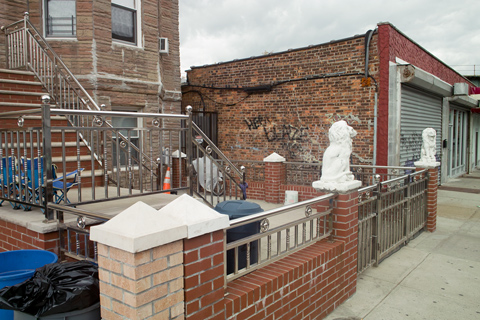
Bensonhurst lions — © Brian Rose

Nature as Artifice, Aperture Gallery — © Brian Rose
Not since they established the city of Nieuw Amsterdam in the 17th century have the Dutch been such a presence in the city as now. Everywhere one turns there is yet another event tied to the 400th anniversary of the arrival of Henry Hudson, an Englishman hired by the Dutch, to these shores. We have long known that many of our local names are derived from the Dutch—Brooklyn, Harlem, Tribeca—no that’s a joke, Tribeca is the Indian name for triangle below Canal.
But never have we been reminded so often and so well of our Dutch heritage. Had it not been for present day Dutch promotional savvy, we would probably have missed the whole 400th anniversary thing. Or we’d have been stuck with celebrating on our own terms, which certainly would not have involved major cultural events and exhibitions.
Were the United States to remind the English of our common heritage by unilaterally staging an official series of arts events in London, it would be regarded as an act of cultural imperialism, rightly so. But New Yorkers are pretty confident of their place in the grand scheme of things—center of the universe as we know it—so a little cultural hubris on the part of the Dutch is not necessarily unwelcome. The city has rolled out the red carpet, with the mayor pointing out, in this election year, that none of it has cost the city a red cent, much less $24 in beads and trinkets.
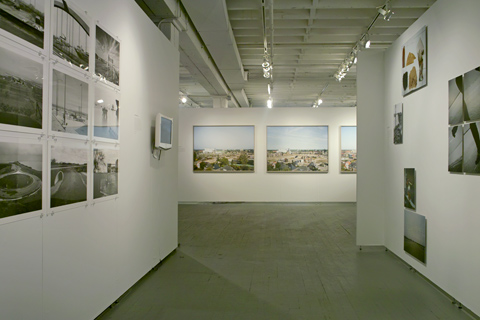
Nature as Artifice, Aperture Gallery — © Brian Rose
Which brings me, belatedly, to the topic of this post—an exhibition at Aperture Gallery, Nature as Artifice:
New Dutch Landscape in Photography and Video Art. This is the second major show this year featuring Dutch photographers. The first, at the Museum of the City of New York, focused on New York as seen by the Dutch. In this exhibit, the Dutch look at their own landscape, historically one of the most engineered patches of ground on earth.
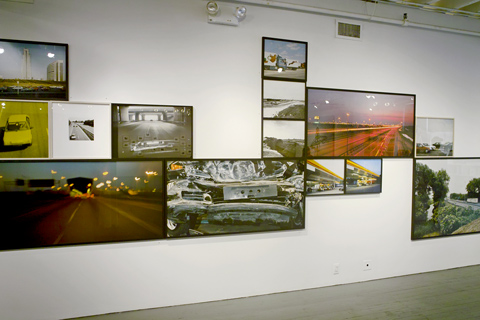
Snelweg, Theo Baart and Cary Markerink — © Brian Rose
Having lived in the Netherlands for about 15 years, I was familiar with some of the photographers in the show. One wall of the gallery was devoted to a tour de force project called Snelweg (freeway), the work of Cary Markerink & Theo Baart. Snelweg presents the highway as both the connective tissue of suburbanization and as a place in itself. The pictures, made in various formats and sizes collaged together, looks great on the wall, but made for an even better book. Here’s a description by the photographers from the George Eastman House blog:
Since the Dutch prefer to look at “high culture” rather then reflect upon the “low culture” – the suburban landscape – it was difficult to find funding for our project. It forced us to take the lead. We subsequently became the producers, photographers, publishers and designers of the project. For the publication we had in mind we invited the American-born Dutch writer Tracy Metz who contributed an elaborate essay on the phenomena of the Dutch Highway. When designing the photo-book we choose a linear form. We had photographed in a mix of styles – using a variety of cameras and film – reflecting on the changes that had occurred in landscape-photography since the seventies. Every spread of the book was different; we used gatefolds, grids, full-bleed pages and included a typographical landscape as a double-gatefold, using the names of underpasses which in the Netherlands are called after the historical locations present before the highway was constructed there.
Although Snelweg depicts the freeway in the intensely used Dutch context, it’s really a universal theme, and applies to the motorway landscape of western Europe and the urbanized parts of the United States. It could have been the starting point for a different exhibition looking at connectivity and mobility as inhabited space not simply as the bare bones of infrastructure.
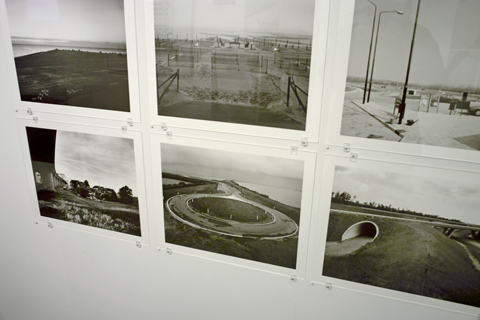
Jannes Linders photographs — © Brian Rose
The rest of Nature as Artifice presents less complete slices of the Dutch landscape with some photographers well represented, others harder to get a handle on. Jannes Linders, one of my favorite Dutch photographers—largely unknown in the U.S.—is shown in a grid of large format black and white prints. These quiet, mostly emptied out vistas, deserve more wall space. They show a basic fact of the Dutch landscape, that while virtually every parcel of land is designated for use, much of the country retains its 17th century horizontal aspect punctuated by spires, windmills, and newer urban fixtures. What sets Linders apart is that he invests this often banal landscape with a poetic, though somber, quality that—from my experience—lies at the heart of Dutch society.
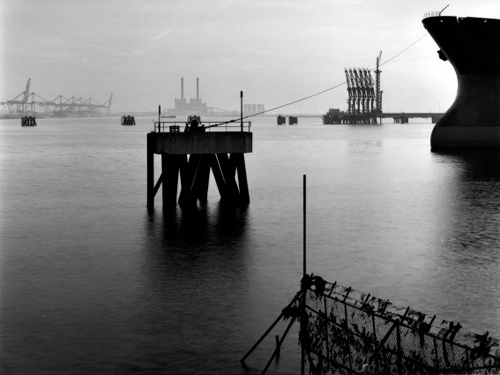
Photo by Jannes Linders
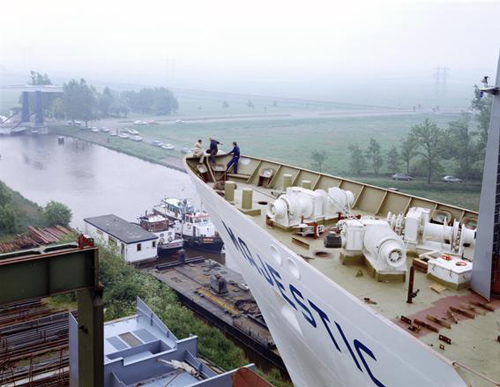
Photo by Hans Aarsman
As an outsider in the Netherlands I found the Dutch frequently inscrutable, insular. That’s how I feel about Hans Aarsman’s photographs. When I first arrived in the Netherlands his book of photos taken from the roof of an RV while traveling the country was something of a popular sensation for what was basically art photography. I never connected with the pictures, but obviously the Dutch recognized something essential about themselves in the mirror of his camera. In any case, I don’t think he is well served by showing poorly printed 4×5 contact prints to Americans unfamiliar with his photographs.
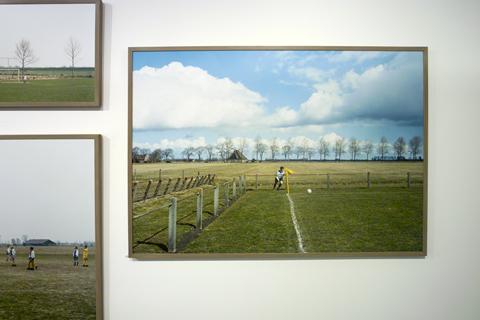
Hans van der Meer photographs — © Brian Rose
Two other photographers I’d like to spotlight here are Wout Berger and Hans van der Meer. The latter has for years been photographing small time soccer fields in the Netherlands and all over Europe. While his pictures capture moments of play, they are equally about the surrounding landscapes, and express how integral the game is to Dutch society—and much of the world. I have always loved these pictures. Three, shown in this exhibition is not enough.
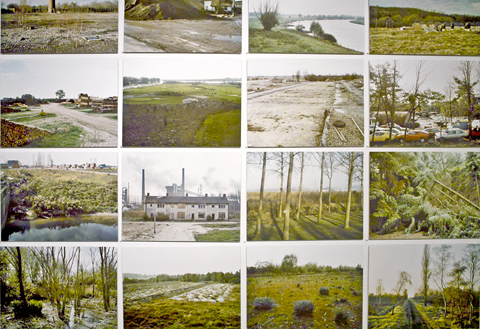
Poisoned Landscape by Wout Berger — © Brian Rose
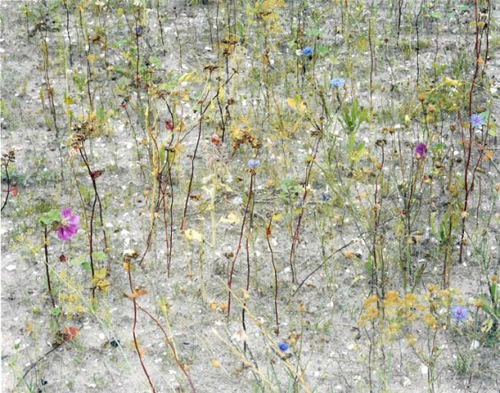
Photograph by Wout Berger
Wout Berger is another brilliant Dutch photographer perhaps not adequately shown in Nature as Artifice. His photographs of polluted wasteland around the Netherlands are interesting—despite murky looking prints—but his more recent work, often made just looking down at the ground a few feet in front of him, find the infinite in the finite. His book, Like Birds, which is on sale at Aperture Gallery, is beautiful.
What’s missing from this exhibition, speaking from a not entirely disinterested perspective (see my own pictures of the periphery of Amsterdam), are images of the new neighborhoods, the utopian architecture, the supreme expressions of the planners and architects whose visions of the future have been implemented in the Netherlands to an extent unique in the world. There are glimpses of it in Nature as Artifice, but just as the cityscape of New York was missing from Dutch Seen at the Museum of the City of New York, significant aspects of the Dutch landscape are largely absent in this, nevertheless, worthwhile show at Aperture.
Have this group photograph New York? Now that would have been interesting.
Blurb party in Tribeca
Last night I went to the Blurb party in New York. That’s me at the beginning of the video above taken from Darius Himes’s blog. Blurb as many of you probably know is an online service with tools for creating your own book, uploading it, and having it printed at very good quality at an affordable price. I’ve been using Blurb to create presentations of my work.
For the second year Blurb has sponsored a contest called Photography.Book.Now in which photo books are judged on content and design. Darius Himes, editor and book publishing maven, was the head of the contest jury. I decided, at the last minute, to submit my Berlin book dummy to the contest, which I am pleased to say won an honorable mention. Where things go with this book I don’t know. It employs a number of photographs from my Lost Border book, but focuses specifically on Berlin, and 2/3 of the images have never been shown elsewhere.
You can preview the book on Blurb’s website here.
The party was held in a space in Tribeca with beautiful views of the city. The winning books were liberally sprinkled about on tables and a continuous shelf running along the windows. After the awards ceremony most of us went to the roof terrace where there were more books. In the video I’m standing at a long table looking through a book and talking to the photographer who made it.
I didn’t know a lot of people at the event, but chatted with a few I recognized–Vince Aletti, photo critic for the New Yorker, the grand prize winner Rafal Milach who did a wonderful book, Phil Block who runs the education department at ICP, and a number of photographers with their books whose names I cannot conjure up. It was an enjoyable evening.